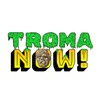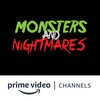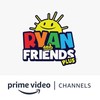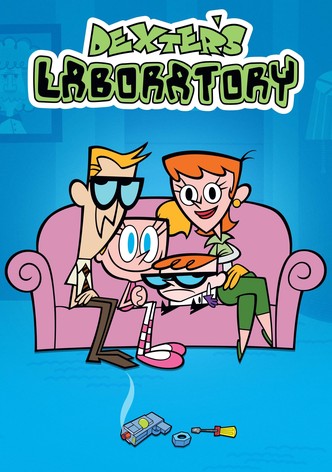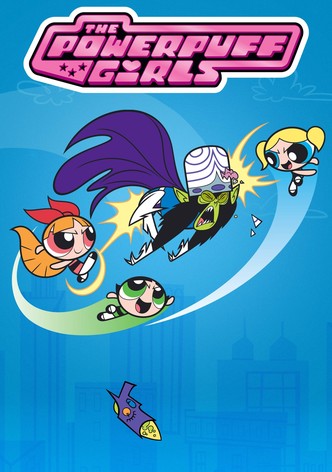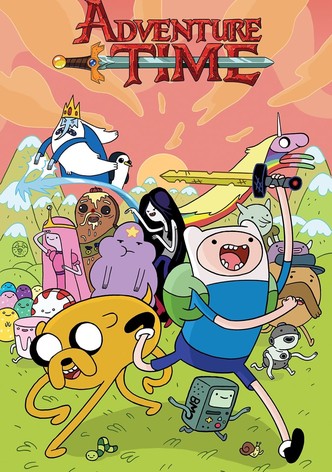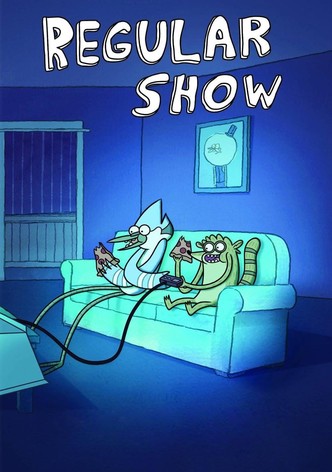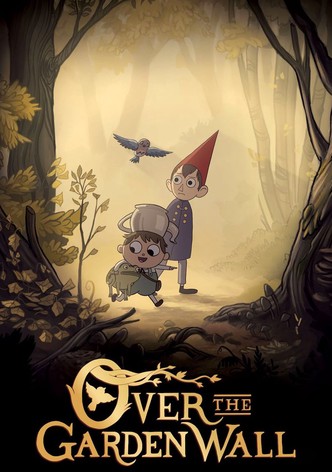If you were a child of the '90s and early 2000s, chances are, you knew about Cartoon Network. The channel began broadcasting in 1992, but it wasn’t until 1995 that it got its first original program, What A Cartoon!. From there, Cartoon Network almost entirely dedicated itself to animation and served as an outlet for plenty of creators like Craig McCracken and Genndy Tartakovsky. Throughout the years, the channel grew and shifted focus, adding the Toonami block to appeal to anime fans and the Adult Swim block to appeal to adults. However, Cartoon Network’s focus on quality animation has endured for over three decades.
It’s not all fun and games, though. Following the merger between Warner Bros. and Discovery in 2022, Cartoon Network was one of the first casualties in an effort by David Zaslav to reduce costs. This resulted in the cancellation of several series and even more being removed from HBO Max. Cartoon Network isn’t dead per se, but it is a shell of its former self. So, to commemorate the channel’s legacy, we’re looking at the 10 best Cartoon Network shows that debuted on the channel. Toonami and Adult Swim have their own legacies, these selections are for the kids.
Dexter’s Laboratory (1996-2003)
As Cartoon Network’s first big hit, there’s a lot to like about Dexter’s Laboratory. While it’s easy to look at it purely from a historical perspective as the launch pad for multiple high-profile creators at the channel, people tend to forget that Dexter’s Laboratory is a smart show for kids.
Sure, its adherence to actual science is a bit iffy, but much like The Adventures of Jimmy Neutron: Boy Genius (2002) or Pinky and the Brain (1995), its use of science puts Dexter and his sister Dee Dee into funny scenarios. The strength of Dexter’s Laboratory was never its animation budget, but rather its witty writing and great character designs. The series respects the intelligence of its audience and never talks down to the kids who watch it. It still manages to be entertaining for both kids and adults, so if you’re looking for a cartoon that makes science funny, Dexter’s Laboratory is for you.
Powerpuff Girls (1998-2004)
While Dexter’s Laboratory and The Powerpuff Girls were pitched around the same time to Cartoon Network, the studio decided to produce Genndy Tartakovsky’s series first. Following Dexter’s success, Cartoon Network eventually decided to produce Craig McCracken’s Powerpuff Girls, and it became an overnight sensation for the channel.
The Powerpuff Girls was a rare show for its time. In an era where “boy shows” were all about action and “girl shows” usually featured a lack of conflict, The Powerpuff Girls appealed to both audiences. If you grew up watching shows like Totally Spies! (2001), Kim Possible, or My Life As a Teenage Robot (2003), those shows all took inspiration from The Powerpuff Girls and its successes. It was always fun watching which of the show’s wide cast of villains would appear and star in an episode, like the egotistical Mojo Jojo, the deliciously flamboyant Him, or future Gorillaz bassist Ace and the Gangreen Gang. The Powerpuff Girls is just a great kid-friendly superhero show all around that both boys and girls will love.
Courage the Cowardly Dog (1999-2002)
It’s not every day that you see a cartoon series dedicated to scaring kids. While shows like Scooby-Doo: Where Are You? (1969) or AAAHH!!! Real Monsters (1994) feature spooky imagery, they aren’t ever really scary. However, to a kid, Courage the Cowardly Dog can be straight-up terrifying!
Much like The Powerpuff Girls, each episode sees Courage contend with some kind of unnerving supernatural force or creature dead set on causing harm to his owner, Muriel. They are an eclectic group of villains, all of which were made to be as disturbing as possible. When Courage gets scared and wants to run from them, usually, kids want to as well. Because of that, Courage the Cowardly Dog is a great show for parents to introduce kids to horror in a safe environment. Sure, it can be scary, but it’s still a cartoon, and there are plenty of jokes to keep things light, much like The Grim Adventures of Billy & Mandy (2001). The show has a fun sense of humor, and while many of the jokes will probably go over most kids’ heads, it’s not as bleak or cynical as Invader Zim (2001). At only four seasons long, it’ll be a relatively quick watch, making it perfect for the Halloween season.
Samurai Jack (2001-2017)
Thanks to the success of Dexter’s Laboratory, Tartakovsky became a golden goose. He helped make Cartoon Network the powerhouse that it was, and his next series, Samurai Jack, tried to widen the channel’s scope beyond young kids. In virtually every way, it was a huge success.
Making a dystopian sci-fi action show starring a time-displaced samurai was a big risk. It was an even bigger risk having the show aimed at older kids, a demographic Cartoon Network rarely targeted, and having a minimalistic approach to dialogue. It all worked out, though, because of how cinematic each episode is. The action is impeccably animated, and the sleek art style helps drive home the hopelessness of the future Aku created. The show draws heavily from Lone Wolf and Cub (1972) and Akira Kurosawa’s Yojimbo (1961), which bridges the gap for people interested in dipping their toes into the anime scene, but still wanting traditional American cartoon antics. Samurai Jack was the series Cartoon Network needed, and the first four seasons helped differentiate the channel from Nickelodeon as the home of more mature children’s animation.
Codename: Kids Next Door (2002-2008)
Spies were popular with kids in the early to mid-2000s. Thanks to movies like Spy Kids (2001), every kid wanted to be a secret agent, and Codename: Kids Next Door not only capitalized on the spy trend, but absolutely thrived in it.
The spy gadgets and the undercover antics the KND get into are fun, but it is the quintet of leads that make the show a true blast. Each of the core team members have their own distinct personalities that make them likable, whether it be Numbah 5’s cool attitude or Numbah 3’s happy-go-lucky demeanor. In many ways, the show feels a lot like certain seasons of Power Rangers (1993) with how well-developed the relationships are between its leads. It’s also decidedly more kid-friendly than most 2000s animated action series, with segments that feel catered toward kids and what kids will find evil, like a vampire who spanks anyone he believes is misbehaving. At the end of the day, Codename: Kids Next Door is a fun series that any kid can enjoy, whether they’re into spies or not.
Adventure Time (2010-2018)
The 2010s were a special time for Cartoon Network. Not only was it firing on all cylinders creatively, but it was also producing some of the best shows in the channel’s history. Case in point, Adventure Time.
Created by Pendleton Ward, Adventure Time’s biggest strength is how alive it feels. The world that Finn, Jake, and the Land of Ooo exist in is wacky and silly, but surprisingly grounded. The characters all behave like real people and have fully developed, often tragic, lives. Adventure Time grows up with its audience, delivering more thoughtful and poignant content the longer it goes on. There is still plenty of silly content, but the series becomes more interested in exploring its setting and themes than providing simple entertainment. It’s a world that feels lived in, and Ward’s writing helps make Adventure Time appeal to both kids who want to see Jake be a goofball and adults who are interested in the character drama.
Regular Show (2010-2017)
Animated sitcoms are nothing new. Following the week-to-week antics of a small cast of characters in suburbia has been done to death by shows like The Simpsons (1989) and Family Guy (1999), but they’re not quite as witty as Regular Show is.
Regular Show is a comedy, but unlike most of its peers, it's considerably more laid back. The series is content to plop its characters into odd circumstances, and instead of having them react in an over-the-top and zany way, they approach their problems subdued and believably. Most people can relate to Mordecai, Rigby, Skips, and even Benson because of how they all seem like real people first rather than simple sitcom characters. It’s arguably one of the most adult shows on Cartoon Network, and fans of Close Enough (2020) will feel right at home with the mundane yet nonsensical chaos that the cast gets into. If you’re more interested in clever writing and strong characters as opposed to slapstick, then Regular Show is right up your alley.
Steven Universe (2013-2019)
Steven Universe is an unconventional series that was well ahead of its time. Not only does it feature prominent LGBTQ+ representation, but it also delivers an intergalactic serialized adventure series that is still one of Cartoon Network’s best shows. While it may lean a bit too heavily into juvenile jokes and gags for its first season, future seasons go all in on exploring the deep psychological issues that both Steven and the Crystal Gems have.
The story is serialized in much the same way as Avatar: the Last Airbender (2005), but Steven Universe prioritizes character development over its planet-spanning narrative. It’s an excellent series about the positives and negatives of growing up, and it isn’t afraid to challenge the morals and ethics of its cast. In some ways, I wish Steven Universe had gone more in depth with some questions, but over the course of five seasons, a film, and an epilogue series, we grow to love the Crystal Gems and the residents of Beach City. Steven Universe bursts with empathy, and any kid looking for a more sensitive series will fall in love with it.
Over the Garden Wall (2014)
Few animated series can capture a specific mood quite like Over the Garden Wall. When you think of Cartoon Network’s first miniseries, the first thing that should spring to mind is autumn and all of the spooky qualities it carries with it.
If you loved the spooky aesthetics of Gravity Falls (2012) or The Owl House (2020), then you’ll adore Over the Garden Wall. The miniseries takes a lot of inspiration from classic Grimm fairy tales to create modern-day folklore. It evocatively paints the Unknown as an ominous yet welcoming forest rife with strange creatures that may be dangerous, but who are also quirky and fun to interact with. At only 10 episodes long, the series doesn’t overstay its welcome. While it tells a complete story, its beautiful imagery and offbeat tone will leave you hoping and praying that Cartoon Network revisits it. If you’re craving some fall imagery or just want to get into a spooky mood, then you can’t go wrong with Over the Garden Wall.
Infinity Train (2019-2021)
If you want an example of how Cartoon Network was gutted following the rise of David Zaslav as CEO of Warner Bros. Discovery, look no further than Infinity Train, a promising series where each season revolves around a new lead exploring a never-ending train. The train functions similarly to the town of Silent Hill, where a passenger stays on the train until they come to turn with some fact about themselves they wanted to ignore or hide.
It sounds heavy, and it is. Infinity Train is unafraid to go down some dark routes, much like later seasons of Adventure Time and Steven Universe. It has a certain cutesy, child-friendly charm, like a train car filled with sentient corgis. However, it has very little appeal to children. In that regard, it makes sense why it was cancelled, but it being completely scrubbed from Cartoon Network’s history books is a crime. If you’re the kind of person looking for evocative animated storytelling, or just someone who cares about the preservation of media, then you need to hunt down Infinity Train. It’s the riskiest show Cartoon Network has ever made, but it stands as one of its best.




















































































































































































































